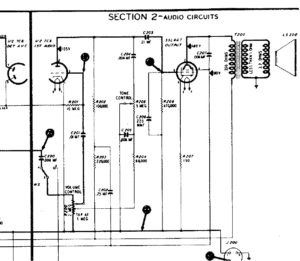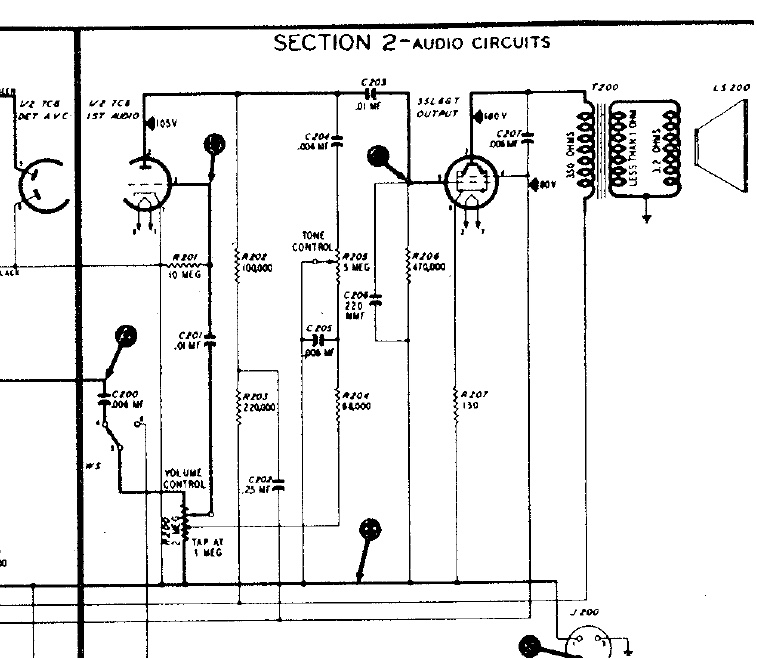An update on the 1948 and 1949 Philcos… I’ve now partially recapped both these radios. I’m going slowly into replacing paper caps, having learned my lesson about the longevity and “sound” of these components. In my view, it depends entirely on what has happened to them before they ended up in my clutches. The barn radio represents a worst case: the radio was stored outdoors in Vermont, likely for years. My father’s Knight Kit push-pull 6V6 was stored high and dry, indoors, in a warm spot. I have done nothing to it other than swap out tubes for experimental reasons. It still sounds great. It is quite likely that I’ll replace most, if not all, of the paper capacitors in the barn radio if I want to get the radio back up, and I most certainly do want to do that. I replaced all the filter caps, and again brought the radio up in stages on the variac. I did this much more rapidly than before, and at no point was there any hum whatsoever. At 117 volts, the phono input gave me full-throated output, but it had a sort of ‘frog in its throat.’ Much intermodulation distortion. The radio is silent. As in fubar. I happened to have a stray pair of .01 microfarad capacitors on hand. I replaced the coupling caps, one between the volume control wiper and the grid of the 7C6 (1st audio amp stage), and the other between the pin 2 plate of the 7C6 and the grid of the 50L6 (audio output). I fired the radio back up with these mods, plugging it right in to the line voltage (as I will do henceforward), and the sound was cleaned up nicely.
 |
| Audio section of the ‘barn radio.’ |
As a personal tutorial, my next operation will be to troubleshoot the receiver section of this radio point by point. And then I’ll replace the caps. But I’ve got to buy the caps 1st, so…
As for the 1948 radio, I replaced the filter caps. Somebody before me had taken care of the coupling caps. Now, I think it is stable enough for me to go about trying an alignment.
